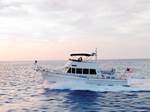Structural adhesives: The basics
An adhesive is “structural” if it has sufficient strength to transfer or share loads between highly stressed components. Here's what that requires.
An adhesive is “structural” if it has sufficient strength to transfer or share loads between highly stressed components. Adhesive manufacturers typically stipulate that a force of at least 6.9 MPa is required to separate a structural adhesive bonded joint in a lap shear coupon test (for more background, see "Bonding Technology: Thermosetting Structural Adhesives," under "Editor's Picks" at top right). To achieve such performance, or effective adhesion, the adhesive’s chemistry must dissolve molecules in the adherend, enabling it to form covalent chemical bonds that lock the adhesive and adherend together.
The bond can be enhanced by increasing surface free energy through abrasion of the substrate’s surface. Although this must be done carefully to avoid fiber damage, the microscopic crevices it creates increases surface area (which increases the opportunity for effective adhesion) and captures the adhesive for a mechanical interlock as well. Additionally, the structural properties of adhesives can be tailored with numerous additives, including plasticizers, rubbers, curatives and accelerators to increase or reduce viscosity, elongation out-time and/or cure speed. Further, microspheres are often added as spacers to maintain consistent bondline thickness.
There are three dominant thermosetting resin chemistries: epoxy (the most common), polyurethane and acrylic (including methyl methacrylate or MMA). Epoxy is the strongest, and offers high temperature and chemical resistance, so is most common in aerospace. Tough urethanes perform well in a wide variety of environments, but in general have lower strength than either epoxies or acrylics. Acrylics and MMAs provide high bond strength on plastics, metals and composites, and good performance for bonding even on oily surfaces, at lower surface temperatures than epoxies. Chemistry choice depends on many factors, including expected thermal, chemical and stress environments.
Structural adhesives are offered in liquid, paste and film form. Liquids typically offer better load transfer due to the thin bond line, but can be brittle when cured. Pastes, with viscosities of 8,000 centipoise or more, tend to form thicker bond lines and offer greater elongation and impact resistance. Films need heat, and are commonly used in aerospace for bonding faceskins to honeycomb core; most will be covered in Part 2 of CW’s Structural Adhesives coverage.
This short article is a Side Story is to a longer feature titled "Structural Adhesives, Part 1: Industrial." To read the main article, click on its title under "Editor's Picks" at top right.
Related Content
-
Plant tour: Arris Composites, Berkeley, Calif., U.S.
The creator of Additive Molding is leveraging automation and thermoplastics to provide high-volume, high-quality, sustainable composites manufacturing services.
-
Toray rCF from Boeing 787 is incorporated into ultra-light laptops
Torayca-based aerospace components have successfully been repurposed into the Lenovo ThinkPad X1 Carbon Gen 12, highlighting the ongoing application of recycled composites.
-
Running shoe insoles get a lift with thermoplastic fiberglass tapes
FlexSpring insoles take advantage of unidirectional, continuous fiberglass and thermoplastics to enable next-level performance for the everyday runner.














.jpg;maxWidth=300;quality=90)

